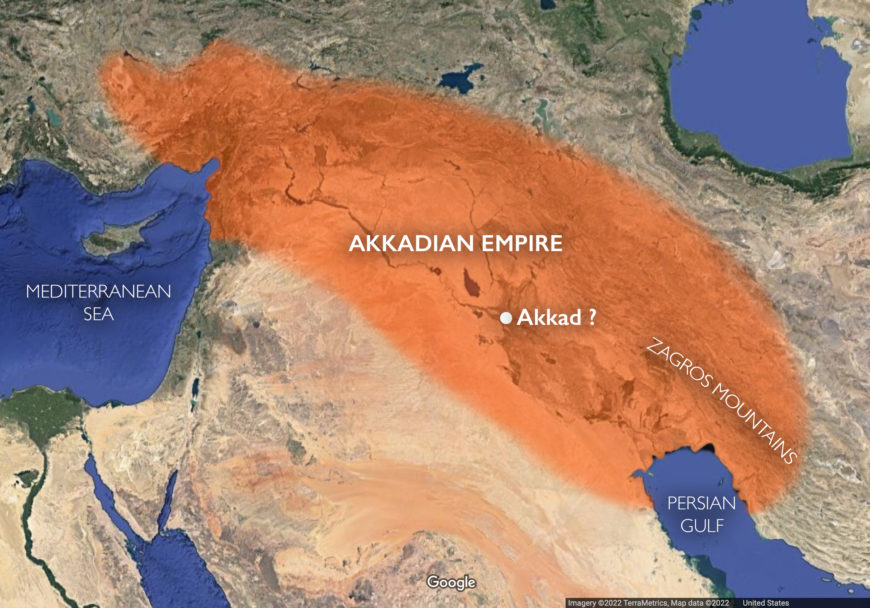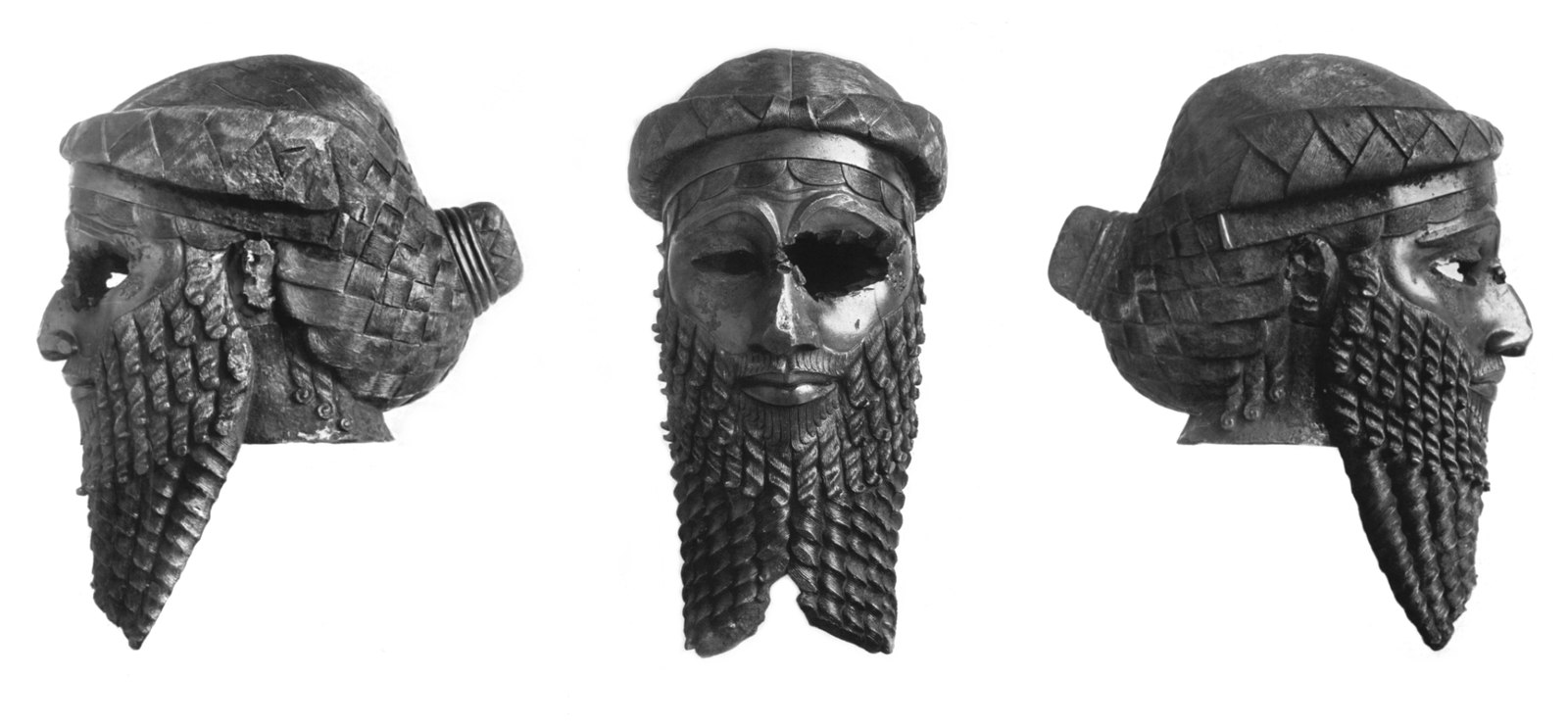Introduction to Akkad
Akkad, an introduction
Founded by the famed Sargon the Great, Akkad was a powerful military empire.

Approximate extent of the Akkadian Empire under Sargon, c. 2334–2279 B.C.E. (underlying map © Google)
Akkad
Competition between Akkad in the north and Ur in the south created two centralized regional powers at the end of the third millennium.
This centralization was military in nature and the art of this period generally became more martial. The Akkadian Empire was begun by Sargon, a man from a lowly family who rose to power and founded the royal city of Akkad (Akkad has not yet been located, though one theory puts it under modern Baghdad).
Head of an Akkadian ruler
This sculpture of an unidentified Akkadian ruler (some say it is Sargon, but no one knows) is one of the most beautiful and terrifying images in all of ancient Near Eastern art. The life-sized bronze head shows in sharp geometric clarity, locks of hair, curled lips, and a wrinkled brow. Perhaps more awesome than the powerful and somber face of this ruler is the violent attack that mutilated it in antiquity.

Head of an Akkadian ruler, 2250–2200 B.C.E., bronze (photo: M.E.L. Mallowan)
Ur
The kingdom of Akkad ends with internal strife and invasion by the Gutians from the Zagros mountains to the northeast. The Gutians were ousted in turn and the city of Ur, south of Uruk, became dominant. King Ur-Nammu established the third dynasty of Ur, also referred to as the Ur III period.
Additional resources
Read a chapter in our textbook, Reframing Art History, about rethinking how we approach the art of the Ancient Near East.
The Akkadian Period on The Metropolitan Museum of Art’s Heilbrunn Timeline of Art History.
Victory Stele of Naram-Sin
Naram-Sin leads his victorious army up a mountain, as vanquished Lullubi people fall before him.
Victory Stele of Naram-Sin, 2254-2218 B.C.E., pink limestone, Akkadian (Musée du Louvre, Paris)
This monument depicts the Akkadian victory over the Lullubi Mountain people. In the 12th century B.C.E., a thousand years after it was originally made, the Elamite king, Shutruk-Nahhunte, attacked Babylon and, according to his later inscription, the stele was taken to Susa in what is now Iran. A stele is a vertical stone monument or marker often inscribed with text or relief carving.
Cite this page as: Dr. Beth Harris and Dr. Steven Zucker, “Victory Stele of Naram-Sin,” in Smarthistory, November 24, 2015, accessed April 10, 2024, https://smarthistory.org/victory-stele-of-naram-sin/.

